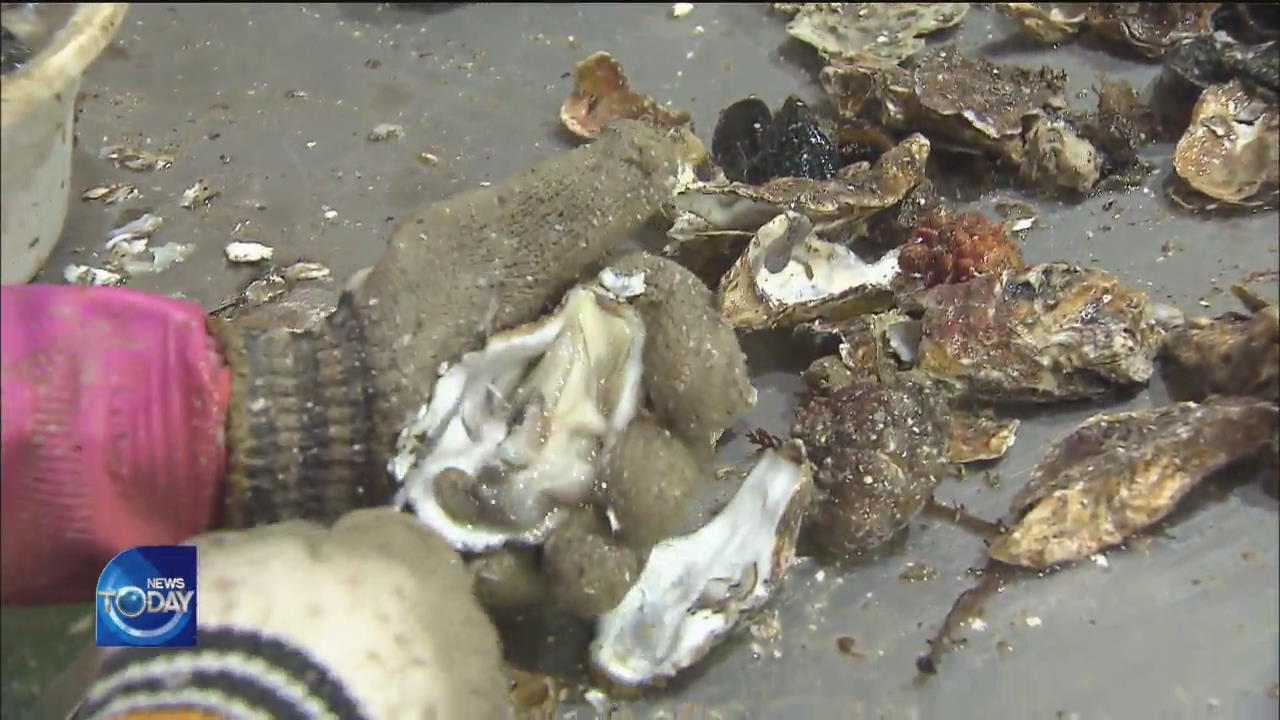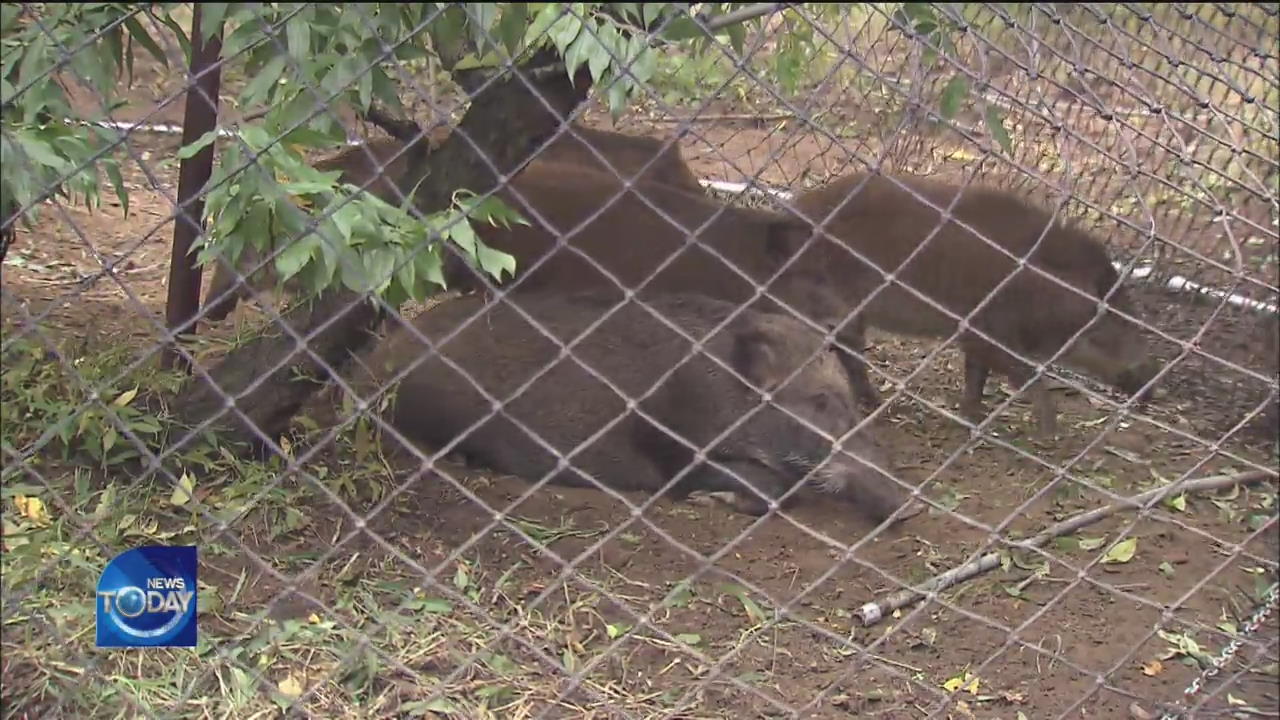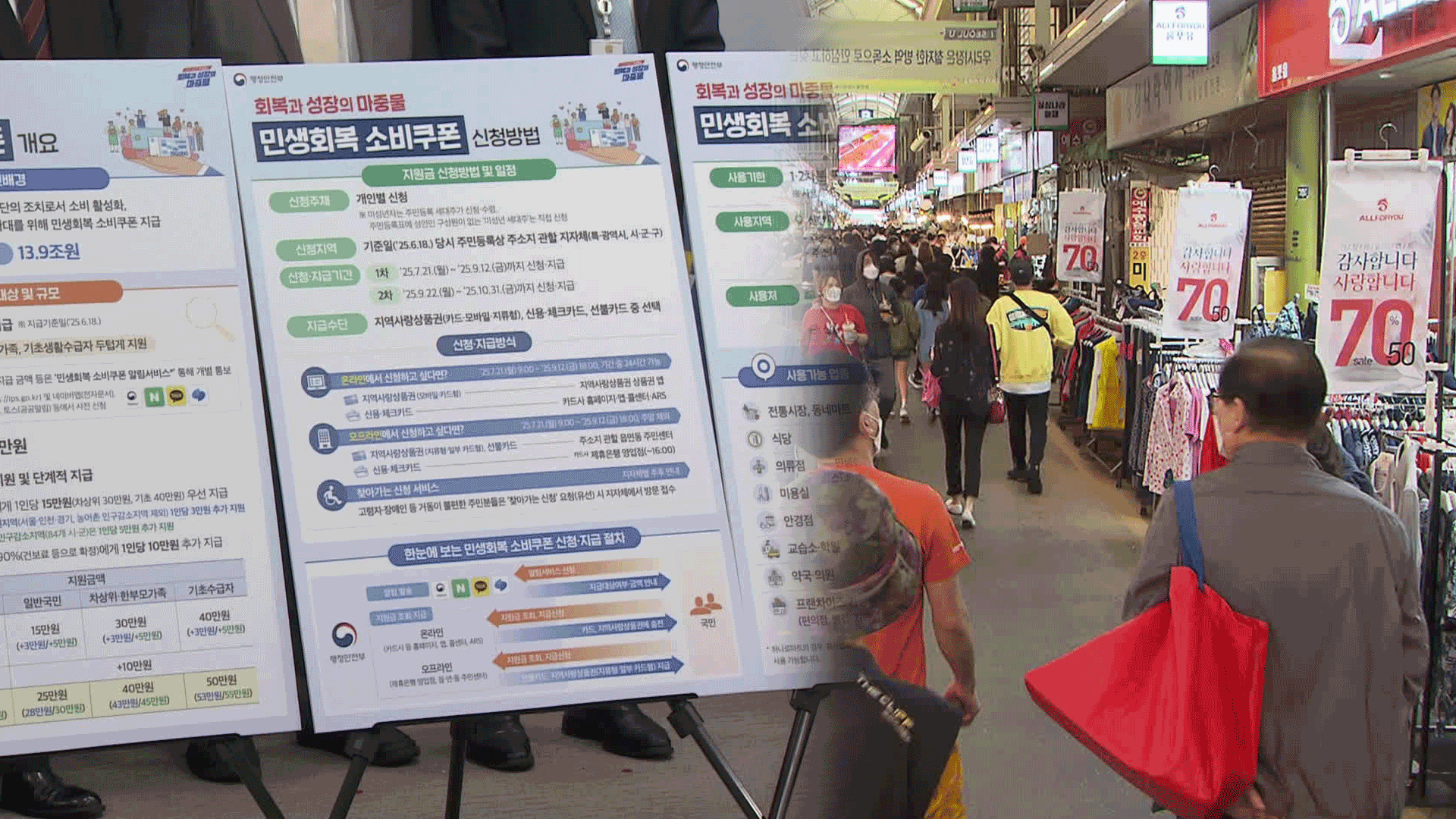CONCERNS OVER OYSTER FARMING
입력 2019.10.18 (15:08)
수정 2019.10.18 (17:30)
읽어주기 기능은 크롬기반의
브라우저에서만 사용하실 수 있습니다.
[Anchor Lead]
When the weather turns chilly, the oyster harvesting season begins in the southern coast of Korea. Oyster farms project good harvests this year as they suffered no damage from typhoons or other natural disasters. However, oyster farmers are worried that their exports to Japan may suffer due to the chilled bilateral relations.
[Pkg]
A seemingly infinite number of oyster farms dot the blue sea. Clusters of huge oysters clinging on to the long ropes are hauled up from 15 meters deep. The ones that have been growing for nearly a year in the clear ocean are stacked high up on the barge.
[Soundbite] PARK CHANG-HEE(OYSTER FARMER) : "The water temperature was just right and there were ample nutrients. So we have oysters twice as large than last year."
This oyster harvest is expected to be larger than those of previous years since oyster farms suffered no typhoon damage and the crops are good. The freshly caught oysters are brought to the workshop. There's still some time left until the peak kimchi-making season, when oysters are in high demand, but workers cannot rest as orders are already pouring in from large retailers. The National Federation of Fisheries Cooperatives held the year's first oyster bidding to begin retail sales. The wholesale price of oysters this year is about 70,000 won per 10 kilograms, some 10% lower than last year. As Japan is one of Korea's largest fisheries export destinations, local fishermen are concerned that outbound shipments may be impacted by the ongoing bilateral trade conflict.
[Soundbite] JI HONG-TAE(OYSTER FARMERS ASSOCIATION) : "I'm very worried about exports to Japan. We plan to diversify our export markets and expand to China, Russia, Malaysia, and Thailand."
Oyster harvest in the south coast will continue until next June.
When the weather turns chilly, the oyster harvesting season begins in the southern coast of Korea. Oyster farms project good harvests this year as they suffered no damage from typhoons or other natural disasters. However, oyster farmers are worried that their exports to Japan may suffer due to the chilled bilateral relations.
[Pkg]
A seemingly infinite number of oyster farms dot the blue sea. Clusters of huge oysters clinging on to the long ropes are hauled up from 15 meters deep. The ones that have been growing for nearly a year in the clear ocean are stacked high up on the barge.
[Soundbite] PARK CHANG-HEE(OYSTER FARMER) : "The water temperature was just right and there were ample nutrients. So we have oysters twice as large than last year."
This oyster harvest is expected to be larger than those of previous years since oyster farms suffered no typhoon damage and the crops are good. The freshly caught oysters are brought to the workshop. There's still some time left until the peak kimchi-making season, when oysters are in high demand, but workers cannot rest as orders are already pouring in from large retailers. The National Federation of Fisheries Cooperatives held the year's first oyster bidding to begin retail sales. The wholesale price of oysters this year is about 70,000 won per 10 kilograms, some 10% lower than last year. As Japan is one of Korea's largest fisheries export destinations, local fishermen are concerned that outbound shipments may be impacted by the ongoing bilateral trade conflict.
[Soundbite] JI HONG-TAE(OYSTER FARMERS ASSOCIATION) : "I'm very worried about exports to Japan. We plan to diversify our export markets and expand to China, Russia, Malaysia, and Thailand."
Oyster harvest in the south coast will continue until next June.
■ 제보하기
▷ 카카오톡 : 'KBS제보' 검색, 채널 추가
▷ 전화 : 02-781-1234, 4444
▷ 이메일 : kbs1234@kbs.co.kr
▷ 유튜브, 네이버, 카카오에서도 KBS뉴스를 구독해주세요!
- CONCERNS OVER OYSTER FARMING
-
- 입력 2019-10-18 15:34:08
- 수정2019-10-18 17:30:48

[Anchor Lead]
When the weather turns chilly, the oyster harvesting season begins in the southern coast of Korea. Oyster farms project good harvests this year as they suffered no damage from typhoons or other natural disasters. However, oyster farmers are worried that their exports to Japan may suffer due to the chilled bilateral relations.
[Pkg]
A seemingly infinite number of oyster farms dot the blue sea. Clusters of huge oysters clinging on to the long ropes are hauled up from 15 meters deep. The ones that have been growing for nearly a year in the clear ocean are stacked high up on the barge.
[Soundbite] PARK CHANG-HEE(OYSTER FARMER) : "The water temperature was just right and there were ample nutrients. So we have oysters twice as large than last year."
This oyster harvest is expected to be larger than those of previous years since oyster farms suffered no typhoon damage and the crops are good. The freshly caught oysters are brought to the workshop. There's still some time left until the peak kimchi-making season, when oysters are in high demand, but workers cannot rest as orders are already pouring in from large retailers. The National Federation of Fisheries Cooperatives held the year's first oyster bidding to begin retail sales. The wholesale price of oysters this year is about 70,000 won per 10 kilograms, some 10% lower than last year. As Japan is one of Korea's largest fisheries export destinations, local fishermen are concerned that outbound shipments may be impacted by the ongoing bilateral trade conflict.
[Soundbite] JI HONG-TAE(OYSTER FARMERS ASSOCIATION) : "I'm very worried about exports to Japan. We plan to diversify our export markets and expand to China, Russia, Malaysia, and Thailand."
Oyster harvest in the south coast will continue until next June.
When the weather turns chilly, the oyster harvesting season begins in the southern coast of Korea. Oyster farms project good harvests this year as they suffered no damage from typhoons or other natural disasters. However, oyster farmers are worried that their exports to Japan may suffer due to the chilled bilateral relations.
[Pkg]
A seemingly infinite number of oyster farms dot the blue sea. Clusters of huge oysters clinging on to the long ropes are hauled up from 15 meters deep. The ones that have been growing for nearly a year in the clear ocean are stacked high up on the barge.
[Soundbite] PARK CHANG-HEE(OYSTER FARMER) : "The water temperature was just right and there were ample nutrients. So we have oysters twice as large than last year."
This oyster harvest is expected to be larger than those of previous years since oyster farms suffered no typhoon damage and the crops are good. The freshly caught oysters are brought to the workshop. There's still some time left until the peak kimchi-making season, when oysters are in high demand, but workers cannot rest as orders are already pouring in from large retailers. The National Federation of Fisheries Cooperatives held the year's first oyster bidding to begin retail sales. The wholesale price of oysters this year is about 70,000 won per 10 kilograms, some 10% lower than last year. As Japan is one of Korea's largest fisheries export destinations, local fishermen are concerned that outbound shipments may be impacted by the ongoing bilateral trade conflict.
[Soundbite] JI HONG-TAE(OYSTER FARMERS ASSOCIATION) : "I'm very worried about exports to Japan. We plan to diversify our export markets and expand to China, Russia, Malaysia, and Thailand."
Oyster harvest in the south coast will continue until next June.
이 기사가 좋으셨다면
-
좋아요
0
-
응원해요
0
-
후속 원해요
0

















이 기사에 대한 의견을 남겨주세요.